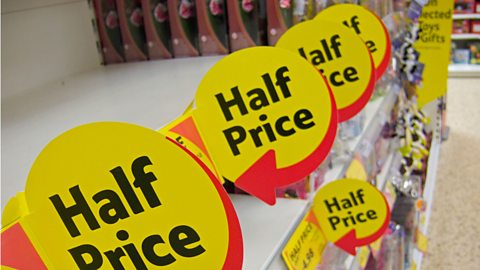Competitive factors
Competitive factors cover how businesses who offer similar products or services affect each other. This includes:
- imitatorA rival organisation that tries to copy its competitor. The imitator often reduces the cost of launching and building its own brand by relying on the innovation done by its competitor.
- price warA period of competition in which companies cut prices in an attempt to increase their share of the market.
- product differentiationMaking a product stand out from its competitors.

Imitators
When a successful product is introduced, rival organisations will often respond by trying to undercut it by quickly producing cheaper alternative versions which will affect the sales of the existing company.
Price wars
Companies may start a price warA period of competition in which companies cut prices in an attempt to increase their share of the market. in order to:
- gain customers
- increase market
A price war happens when companies compete for customers by dropping their prices below the rate of their competitors. This can mean:
- customers get the goods and services they want at lower prices
- prices drop so low that none of the competing companies can make much of a profit on the goods
The size of the competitor may also affect a business. For example:
- a small furniture shop may find itself in trouble if a new IKEA open up near it
- IKEA can buy their supplies and manufacture products in bulk, which reduces costs
- they can pass on these cheaper prices to customers
Loss leaders
Supermarkets have a competitive advantage over smaller grocery stores as they are able to offer loss leaderA product sold at a loss, in order to attract customers to attract customers. This is when goods or services are advertised and sold at below cost price. Its purpose is to attract customers into the supermarket on the assumption that they will go on to buy other products at full price.
Large supermarkets are able to deal with these losses because they are small amounts compared to the businessÔÇÖs overall profits. A small grocery may struggle to balance additional costs like this.
Product differentiation
Businesses can become more competitive by making products that stand out from the competition in terms of price, quality or service. This is called product differentiationMaking a product stand out from its competitors.. Methods of creating product differentiation include:
- establishing a strong brand imageHow a business or product is perceived by others, including consumers. (personality) for a good or service
- making the unique selling pointThe distinctive factors that make a product or brand stand out from rivals. of a good or service clear. For example, opening a chain of discount shops with the tagline
Quality items under a pound
- other competitive factors, such as a product having a better location, design, appearance or price than rivals